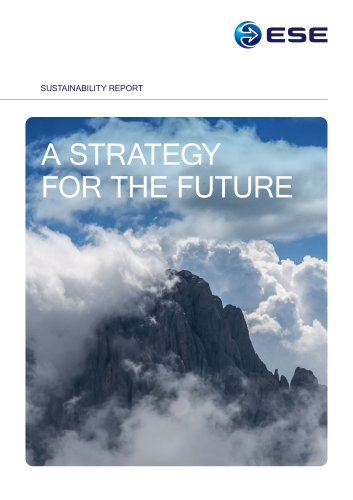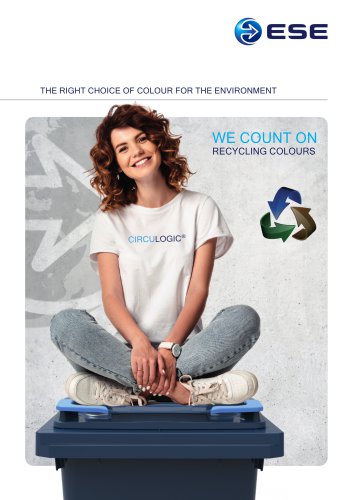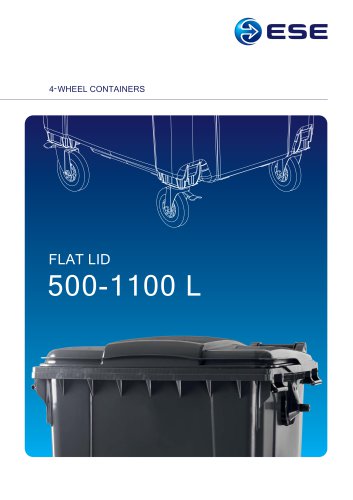
Catalog excerpts
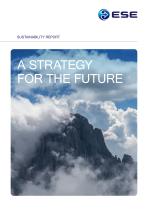
SUSTAINABILITY REPORT
Open the catalog to page 1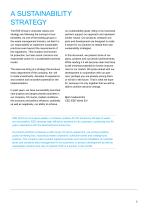
A SUSTAINABILITY STRATEGY The ESE Group‘s corporate values and strategy are following the concept of sustainability. As one of the leading groups in the waste management industry, we feel it is our responsibility to implement sustainable practices even beyond the requirements of the regulations. This includes environmental protection, but also social concerns and responsible action for a sustainable business model. The asset we bring is a strategy that involves every department of the company, the will to make investments, decades of experience and creative and innovative potential for the...
Open the catalog to page 3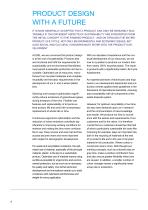
PRODUCT DESIGN WITH A FUTURE IT IS NOW GENERALLY ACCEPTED THAT A PRODUCT CAN ONLY BE GENUINELY SUSTAINABLE IF THE DIFFERENT ASPECTS OF SUSTAINABILITY ARE INTEGRATED FROM THE INITIAL CONCEPT TO THE FINISHED PRODUCT – AND ON THROUGH THE ENTIRE PRODUCT LIFE CYCLE. NOT ONLY ENVIRONMENTAL AND ECONOMIC ISSUES, BUT ALSO SOCIAL AND CULTURAL CONCERNS MUST ENTER INTO THE PRODUCT‘S DEVELOPMENT. At ESE, we are convinced that product design is at the root of sustainability. Products that are functional and fulfil the requirements for sustainability and environmental friendliness must permit sustainable...
Open the catalog to page 4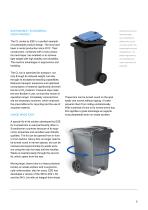
SUSTAINABLE – ECONOMICAL – USER-FRIENDLY Aside from environmental protection and product The CL series by ESE is a perfect example of sustainable product design. The bins have been in serial production since 2012. Their construction, combined with a new production technique, has enabled us to achieve light weight with high stability and durability. The result is advantages in ergonomics and handling. The CL bin is optimized for transport, not only through its reduced weight, but also through its exceptional stacking capabilities. Reduced transport emissions and optimized consumption of...
Open the catalog to page 5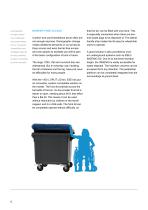
BARRIER-FREE ACCESS change creates new challenges and requirements for our containers. Accessibility and intelligent features for easy handling Comfort and user-friendliness alone often are not enough anymore. Demographic change makes additional demands on our products. Easy access and even barrier-free access and new options to facilitate use will be part of the basic configuration of bins in future. become increasingly more important. The large 1100 L flat and round-lid bins are widespread. But in everyday use, handling the tall containers and the big, heavy lid causes difficulties for...
Open the catalog to page 6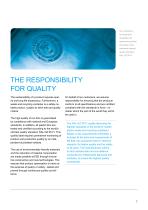
Our containers for waste and recylables are tested and certified according to the worldwide highest quality standard, RAL-GZ 951/1. THE RESPONSIBILITY FOR QUALITY The sustainability of a product requires quality and long life expectancy. Furthermore, a waste and recycling container is a safety-related product, subject to strict test and quality criteria. The high quality of our bins is guaranteed by compliance with national and European standards. In addition, all plastic bins are tested and certified according to the world‘s strictest quality standard, RAL-GZ 951/1. This quality label...
Open the catalog to page 7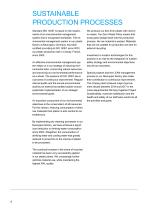
SUSTAINABLE PRODUCTION PROCESSES Standard ISO 14001 is based on the requirements of an environmental management system that is recognized worldwide. The environmental management system in our plastic factory at Neuruppin, Germany, has been certified according to ISO 14001 since 2001, our plastic production site in Crissey, France, since 2005. An effective environmental management system helps us in our strategy of reducing environmental risks, conserving natural resources and improving our environmental performance as a whole. The essence of ISO 14001 lies in a process of continuous...
Open the catalog to page 8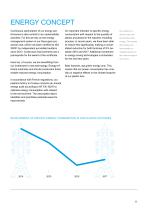
ENERGY CONCEPT Continuous optimization of our energy performance is also central to our sustainability activities. For this we rely on the energy management system in our Neuruppin production site, which has been certified to ISO 50001 by independent accredited auditors since 2013. Continuous improvements are a prerequisite for the award of the certificate. Here too, of course, we are benefitting from our investment in new technology. Energy-efficient machines and shorter production times enable reduced energy consumption. An important indicator is specific energy consumption with respect...
Open the catalog to page 11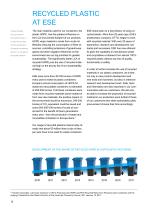
RECYCLED PLASTIC AT ESE Today already we save about 60 million litres of crude oil per year for the production of waste containers due to our usage of recycled plastics. The main material used for our containers, the plastic HDPE, has the greatest influence on the LCA and climate footprint of our products. HDPE virgin material is made from crude oil. Besides reducing the consumption of finite resources, controlling emissions of greenhouse gases and other negative influences on the environment are our top priorities for greater sustainability. The significantly better LCA of recycled HDPE...
Open the catalog to page 12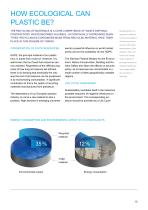
HOW ECOLOGICAL CAN PLASTIC BE? THE RECYCLING OF MATERIALS IS A CORE COMPETENCE OF WASTE DISPOSAL CONTRACTORS. WASTE BECOMES VALUABLE – IN CONTINUALLY INCREASING QUANTITIES. RECYCLABLES CONTAINERS MADE FROM RECYCLED MATERIAL HAVE THEIR PLACE IN THIS SCHEME OF THINGS. Sustainability of a material is defined by the consumption of finite resources and by a life cycle CONSERVATION OF FINITE RESOURCES HDPE, the principal material of our plastic bins, is made from crude oil. However, it is well known that our fossil fuel resources are not unlimited. Regardless of the difficult prognosis of how...
Open the catalog to page 13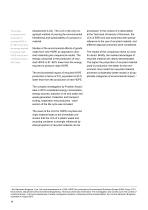
The energy consumed in the production of recycled HDPE is Assessment (LCA). The LCA is the only recognized method of proving the environmental friendliness and sustainability of a product or material. 87 - 88 % lower than the energy required to produce virgin HDPE and the environmental impact is 65 % lower. Studies of the environmental effects of goods made from new HDPE as opposed to recycled materials give unequivocal results. The energy consumed in the production of recycled HDPE is 87 - 88 % lower than the energy required to produce virgin HDPE. The environmental impact of recycled HDPE...
Open the catalog to page 14All ESE catalogs and technical brochures
-
1100 L SPLIT LID
8 Pages
-
FLAT LID 500-1100 L
4 Pages
-
2-WHEEL CONTAINERS
12 Pages

